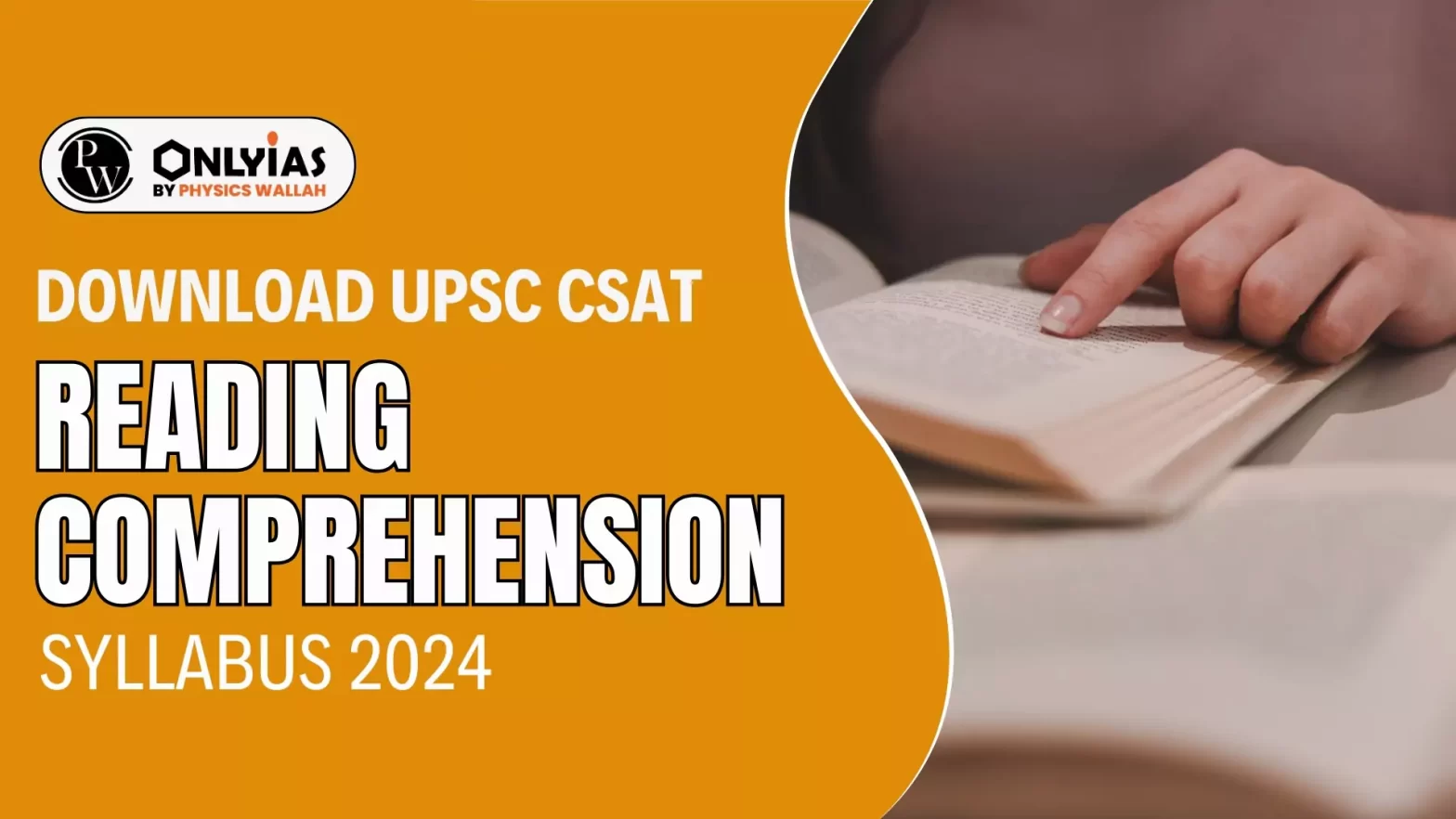![]() PWOnlyIAS
PWOnlyIAS
![]() April 18, 2024 07:49
April 18, 2024 07:49
![]() 4038
4038
![]() 0
0
Learn about the strategies, recommended books, and weightage analysis of the marks for the UPSC CSAT Reading Comprehension syllabus for 2024.

The UPSC CSAT Reading Comprehension 2024 syllabus includes important strategies, recommended books, exam pattern and FAQs. Let’s explore all you need to know!
The UPSC CSE Prelims paper usually consists of two sections: General Studies Paper-I and General Studies Paper-II (CSAT). Paper-I covers topics like history, geography, economics, and current affairs, while CSAT tests aptitude and comprehension skills. Both papers are objective type with multiple-choice questions.
Preparing for the CSAT is crucial due to its increasing difficulty level in recent years. As the competition intensifies, mastering aptitude and comprehension skills becomes essential to ensuring clearing the qualifying cutoff and advancing to the next stage of the UPSC exam.
General Studies Paper-II (CSAT) paper is a qualifying type (minimum 33%). It’s important to know that if you fail the CSAT, regardless of how well you score in General Studies Paper 1, you won’t make it to the Prelims merit list, and you’ll be out of the competition.
| Paper name | GS Paper II (CSAT) |
| Questions | 80 – Objective Type |
| Marks | 200 Marks |
| Qualifying Marks | Minimum 33% |
| Marks per questions | 2.5 marks per question |
| Negative Marking | ⅓ or 0.83 negative marks for every wrong answer |
| Duration of Exam | 2 Hours |
| Languages | English and Hindi |
In the CSAT paper, Reading Comprehension is given the highest weight when compared to all other categories. The question weightage for comprehension ranges from 25 to 30 each year. A complete detail of the Reading Comprehension syllabus is provided here. Read the blog for more details!
The overall syllabus for General Studies Paper II (CSAT) is given below as per UPSC notifications:
|
The GS Paper II (CSAT) Reading Comprehension Section is regarded as one of the simpler but most time-consuming sections of the UPSC IAS Prelims Exam. This portion can be among the highest scoring areas for candidates in the IAS Prelims Exam if it is well- practiced. The following topic-wise reading comprehension syllabus assesses the candidate’s comprehension, interpretation, and analysis of textual material:
Despite the moderate level of comprehension required by UPSC, candidates often lose 30-40 valuable points in comprehension. These marks decide the difference between “being selected” and “having to reapply next year.” Here is a list of magazines and books that every UPSC CSAT aspirants to go for:
Based on the review of previous year exam questions, the UPSC CSAT Reading Comprehension syllabus has an acceptable amount of weight as per allocated topics. Both intellectual and practical questions are raised in this analysis. Below is a full breakdown of how reading comprehension questions are weighted every year from 2011 to 2023:
| Exam Year | Number of Reading Comprehension Questions |
| 2011 | 39 |
| 2012 | 40 |
| 2013 | 33 |
| 2014 | 31 |
| 2015 | 30 |
| 2016 | 28 |
| 2017 | 30 |
| 2018 | 26 |
| 2019 | 30 |
| 2020 | 26 |
| 2021 | 27 |
| 2022 | 27 |
| 2023 | 27 |
A well-thought-out plan can assist the CSAT applicants in solving the high-level questions in the comprehension section. Completing the prelims test series and practicing past comprehension questions from UPSC previous year question papers will help candidates score better. Participating in mock tests also helps them comprehend the question pattern better.
| Must Read | |
| NCERT Notes For UPSC | UPSC Daily Current Affairs |
| UPSC Blogs | UPSC Daily Editorials |
| Daily Current Affairs Quiz | Daily Main Answer Writing |
| UPSC Mains Previous Year Papers | UPSC Test Series 2024 |

<div class="new-fform">
</div>
Latest Comments